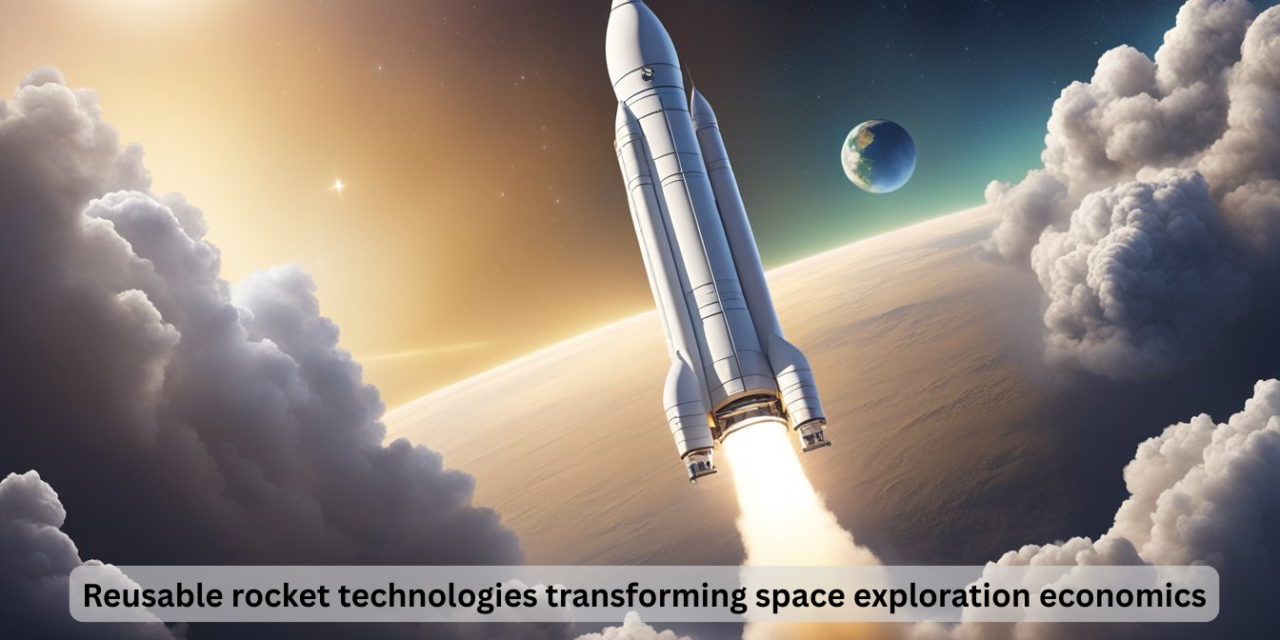Reusable rocket technologies are revolutionizing the economics of space exploration by significantly reducing costs, improving operational efficiency, and enabling more frequent and sustainable space missions. By reusing key components like boosters, engines, and fairings, space agencies and private companies are reshaping the traditional space launch model. Here’s how:
1. Key Cost Reductions
Lower Launch Costs
- Traditional expendable rockets are used only once, with boosters and other components discarded after launch. Reusable rockets allow these components to be refurbished and flown multiple times, drastically reducing costs.
- Example: SpaceX’s Falcon 9 booster can be reused up to 10 times with minimal refurbishment, lowering launch costs from $62 million per launch to as low as $30 million when reusing boosters.
Affordable Access to Space
- Reusability reduces the per-kilogram cost of sending payloads to orbit, making space more accessible to a wider range of users, including startups, universities, and smaller nations.
- Comparison:
- Expendable rockets: ~$18,000/kg (historically, for early expendable systems).
- Reusable rockets: As low as ~$2,700/kg with systems like SpaceX’s Falcon 9.
2. Increased Launch Frequency
- Reusable rockets can be turned around for subsequent launches in weeks or even days, increasing launch cadence and operational efficiency.
- Example: SpaceX has demonstrated rapid reuse with some boosters launching multiple times within a year, significantly accelerating mission timelines.
- Implication:
- Enables faster deployment of satellite constellations (e.g., Starlink).
- Supports responsive space launches for defense or disaster response.
3. Enhanced Sustainability
Resource Efficiency
- By reusing hardware, companies reduce the need for manufacturing new components, saving materials, energy, and labor.
- Environmental Impact:
- Less waste from discarded rocket stages.
- Potential to minimize environmental footprints compared to single-use rockets.
Reduction in Space Debris
- Reusable technologies reduce the number of discarded rocket stages left in orbit or falling back to Earth, addressing a key source of space debris.
4. Broadening Access to Space Exploration
- Lower Barriers for New Players:
- Reduced costs allow smaller countries, private companies, and research institutions to participate in space activities.
- Example: University-led CubeSat missions are increasingly feasible with lower launch prices.
- Expanding Commercial Space:
- Enables new markets like space tourism (e.g., Blue Origin’s New Shepard) and in-orbit manufacturing.
5. Enabling Ambitious Space Exploration
- Reusability makes missions to the Moon, Mars, and beyond more economical by lowering the cost of launching large payloads or refueling in orbit.
- Lunar and Martian Exploration:
- SpaceX’s Starship aims to make interplanetary travel economically viable by fully reusing the rocket and spacecraft.
- Support for Space Infrastructure:
- Frequent and affordable launches facilitate the construction of space stations, lunar bases, and in-orbit refueling depots.
6. Technical Innovations Driving Reusability
Vertical Landing
- Companies like SpaceX and Blue Origin have developed technologies to recover boosters by landing them vertically on Earth or ocean platforms.
- Example: SpaceX’s Falcon 9 first stage lands on autonomous drone ships.
Refurbishment Processes
- Advanced materials and modular designs allow rapid refurbishment and re-certification of rocket components.
- Example: SpaceX refurbishes and reuses fairings, saving millions per launch.
Engine Longevity
- Reusable engines like SpaceX’s Merlin and Blue Origin’s BE-4 are designed for multiple firings without significant degradation.
7. Competitive Market Dynamics
- Lower Prices and More Competition:
- Reusable rockets drive competition, forcing other companies to adopt similar technologies or lower their prices.
- Example: ULA’s Vulcan Centaur and Rocket Lab’s Neutron are being developed with partial reusability to compete with SpaceX.
- Increased Innovation:
- New entrants like Relativity Space and Rocket Lab are exploring reusable designs, fostering innovation in the industry.
8. Challenges of Reusable Rocket Technologies
Development Costs
- High initial R&D costs for reusable systems can be a barrier for smaller companies.
- Example: SpaceX spent billions to develop the reusable Falcon 9 and Starship.
Refurbishment Complexity
- While reuse reduces costs, maintaining and refurbishing rockets requires sophisticated infrastructure and expertise.
- Tradeoff:
- Frequent launches are needed to offset refurbishment and operational costs.
Reliability Concerns
- Ensuring reused components meet stringent safety standards for human and high-value payloads is challenging.
- Solution: Extensive testing and iterative design improvements.
9. Broader Implications for the Space Industry
Democratization of Space
- Reduced costs allow more countries and organizations to access space, accelerating scientific, economic, and technological progress.
New Business Models
- Emergence of industries like satellite mega-constellations (e.g., Starlink), on-demand space launches, and space tourism.
Advancement of Exploration
- Reduced costs pave the way for ambitious missions to Mars, asteroid mining, and deep-space exploration.
Conclusion
Reusable rocket technologies are transforming space exploration economics by significantly reducing costs, enabling more frequent launches, and fostering innovation. They are democratizing access to space, supporting the growth of commercial and scientific missions, and making previously unfeasible missions, like Mars colonization, increasingly realistic. As the technology matures and adoption spreads, reusable rockets will continue to shape the future of space exploration and industry.
Hashtags
#ReusableRockets #RocketReusability #ReusableSpaceTech #AerospaceInnovation #SpaceEconomics #AffordableSpaceflight #CostEfficientRockets #LowerLaunchCosts #SpaceBudgetOptimization #RocketInnovation #NextGenRockets #SustainableSpaceTech #EcoFriendlyRockets #SpaceExplorationMilestones #GlobalSpaceEconomy #FutureOfSpaceflight













